Dee Estuary Birding
Monthly Newsletter...
June 2025
Newsletter
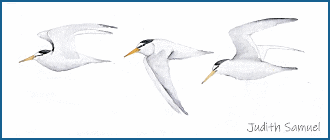
Little Terns - review of 2024 breeding
season
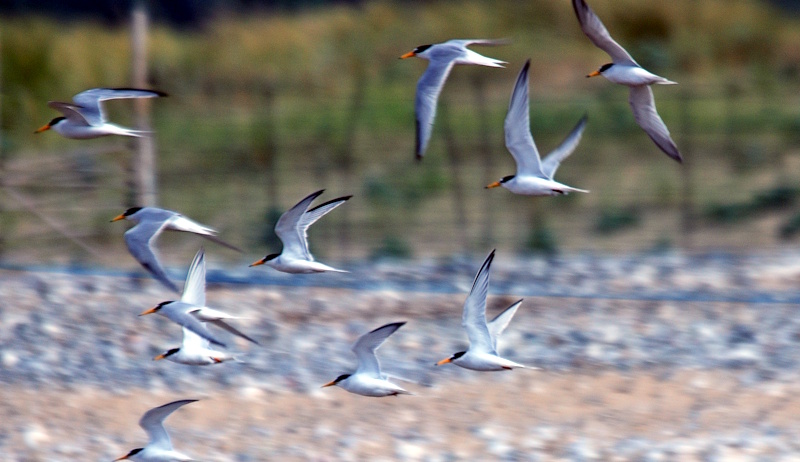
As I write this in mid-May the Little Terns are
arriving in good numbers and starting to get down to some serious
nesting for the 2025 season, so it's time for me to review 2024.
Apart from 2020, when a storm destroyed much of the colony at Gronant in June that year, over the past 10 years and more we've been used to seeing records broken nearly every year, either with increasing numbers of pairs breeding or increasing numbers of young succesfully fledged, and often both, but no records were broken in 2024 with numbers of pairs and fledged both down from the previous three years (Ref 1). However, it was still a reasonably good year at Gronant with 166 pairs succesfully raising 158 fledglings, a productivity of 0.95 (young per pair) which is well above the productivity of 0.75 needed to maintain numbers. Both numbers of pairs and young were close to the average for the previous 10 years. In contrast, it was something of a disaster at the satellite colony at Point of Ayr where nesting was abandoned after heavy predation by crows early in the season.
Crows were also a nuisance at Gronant but the
presence of a much larger number of terns mobbing them. together with
the activity of the wardens, meant predation was kept low. In contrast
to most years
Kestrels were not a problem in 2024, presumably vole numbers were high,
but quite a few nests were destroyed by sand blow otherwise we would
have had a much higher number of fledglings.

NOTE: The
above graph includes data from both Gronant and Point of Ayr so differs
from the equivalent graph in the 2024 Gronant Little Tern Report which
contains only Gronant data. Over the six years since Little Terns
started nesting at Point of Ayr numbers of pairs have varied between
three (2019) and 39 (2022).
Gronant (with Point of Ayr) is undoubtedly the most
productive Little Tern colony in the United Kingdom (Ref 2) with
numbers of breeding pairs steadily increasing ever since the colony was
established in 1975, the numbers of young fledged have been much more
varied but that's normal for tern colonies. One of these years
everything will come together - no significant predation combined with
good weather - and
we'll have a real bumper crop of young, an average of two per nest is
certainly achievable and something we came very close to in 2010 with a
productivet of 1.9.
We know from colour ringing that there is much
interchange of birds between Gronant and the colonies on the east coast
of Ireland and those colonies have also been very succesful over the
years, especially at Kilcoole just south of Dublin. 2024 saw the
highest ever number of pairs there with 285 (Ref 3). I'm not sure of
the number of fledglings but it was a lot, and the colony at Baltry
(north of Dublin) also had a very good season with 112 pairs producing
167 fledglings. It seems likely that the drop off in pairs at Gronant
in 2024 was because some of 'our' Little Terns decided to nest in Ireland for a
change!
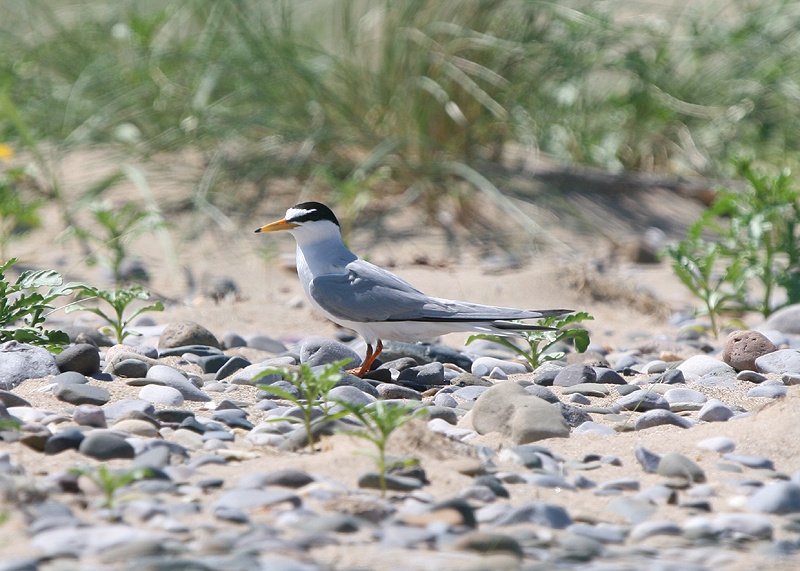
Voluntary Wardens
There's little doubt that our Little Tern colonies
wouldn't exist without wardening which help to protect them from both
potential disturbance from we humans and their dogs, as well as
predation from foxes, kestrels and crows. Wardens also just chat to
visitors telling them all about the Little Terns and other species
present, and that can be the most rewarding of all. So please consider
volunteering. At RSPB Point of Ayr contact the RSPB at Burton Mere
Wetlands for information about wardening. For Gronant feel free just to come along and chat to the
wardens on duty there about becoming a warden, or contact the North
Wales Little Tern Group by emailing: nwlittletern@gmail.com.
Bird Flu
Thankfully, Little Terns have been little affected
by bird flu (HPAI) so far. It's possible that they have some natural
immunity to the disease but more likely it is because of their
lifestyle with nests much more spread out than both Common and
Sandwich Terns so infection is unlikely to spread, along with the fact
that they rarely mix with other terns and gulls, particularly
Black-headed Gulls which seem to be a
major carrier of Bird Flu (Ref 4).
References
1. Aaron McKay et al., Gronant Dunes Little Tern (Sternula albifrons) Report 2024,
Denbighshire CC and North Wales Little Tern Group.
2. David Burnell et al., Seabirds Count, Lynx Nature Books, 2023.
3. BirdWatch Ireland, A succesful year for Irish
Little Terns in 2024, Rare Bird Alert.
4. David norman et al., Near-absence of high pathogenicity avian influenza (HPAI) in Little Terns Sternula albifrons across 13 European countries, Bird Study 71, 2024
I have been writing about Little Terns on this
website annually for 25 years, either in the May or June Newsletters (see list
of past newsletters), so there is a lot of information in those
articles for those who want to read further. I was also a voluntary
warden at Gronant for a good number of years which I thoroughly enjoyed.
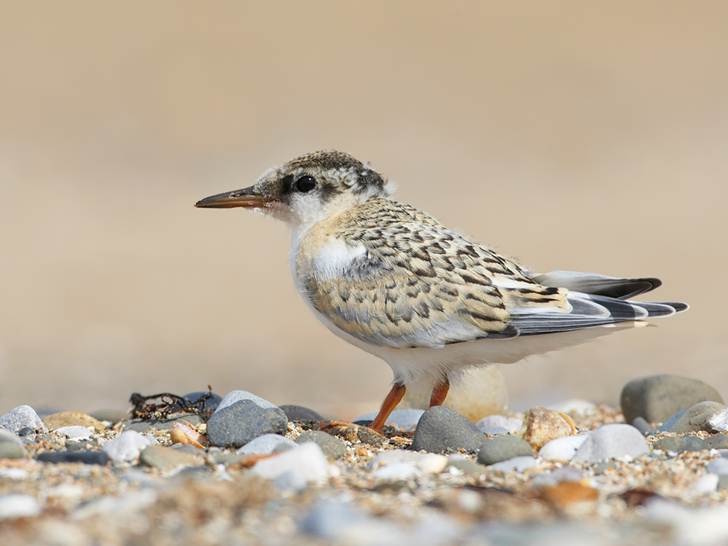
© Richard Steel
Richard Smith
Colour Ring Report
Shelduck

Blue (V4)
Ringed at Martin Mere in December 2024.
Recorded at Longton Marsh on the Ribble Estuary, in February and
Thurstaston Shore on 27/04/25.
This newly ringed Shelduck is showing a fairly
typical movement away from Martin Mere where many spend the winter.
It's probably breeding in the Thurstaston/Heswall area.
Black-tailed Godwits

RWB-RNR
Ringed on the Swale Estuary, Kent, in September 2024.
Seen a further five times on the Swale Estuary up to the end of October
2024.
Recorded at Burton Mere Wetlands on 24/04/2025.

O-YW//W
Although we've not seen this bird on the Dee Estuary for over a year we
do have records from elsewhere up to this last April, and as it is a
particularly well-travelled bird I thought it worthwhile detailing it's
movements.
It was ringed at RSPB Snettisham in September 2019 since when it's been
recorded over 40 times.
Most years it spends late summer at Snettisham although 2022 saw it on
the Humber estuary and 2024 on the Orwell estuary in Suffolk.
There
are three records from Normandy in November (2019 and 2024). All winter
and spring records are from the north-west of England. There are just a
few winter
records but these include two from Thurstaston and one from Burton Mere
Wetlands, all in January and February 2024. The Lune Estuary
(Lancashire) is favoured in March and there have been five records from
Leighton Moss, all in April.
It's been seen once in Iceland, at Lake Myvatn in the north-east of the
country, this was in late May 2022 and probably where it was breeding.
Avocet
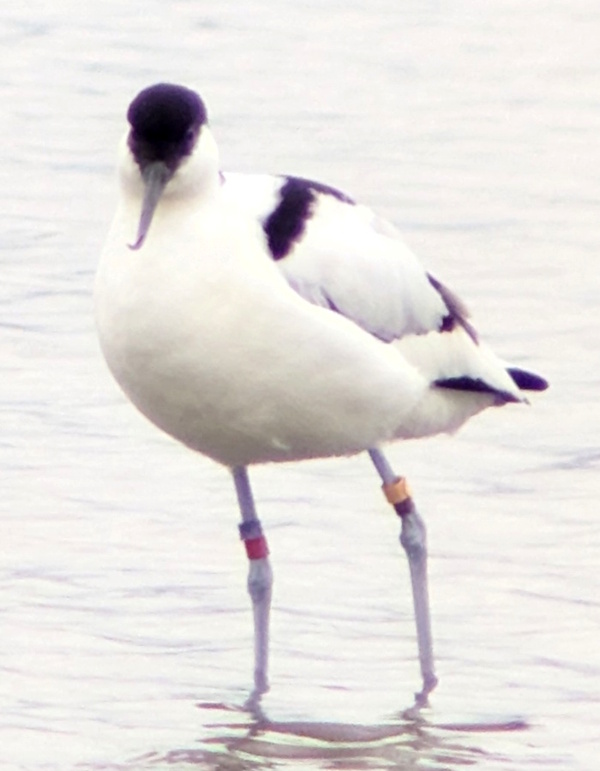
Ym-BR
Ringed at Langford, Nottinghampshire, in June 2017 as a chick.
Recorded at Burton Mere Wetlands on 16/03/2025.
Just this one record since it was ringed, where has it been hiding for
eight years?
Colour Rings were recorded by Richard
Smith, Stephen
Hinde, Colin Schofield, Alex Jones and Richard Speechley.
Richard Smith
May Bird News
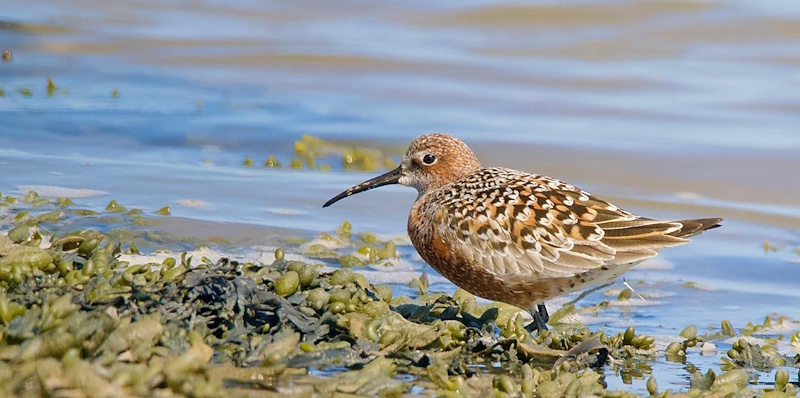
As far as the spring passage of passerines is
concerned it's been a quiet spring but a Serin, both seen and heard,
was a nice record at Meols just inland of the junction of Park Lane and
Carr Lane, Meols. Serins are far from annual in our area, the last one
being a flyover at Hoylake in April 2021 and before that at Leasowe in
May 2015. Yellow Wagtails continued to trickle through in just ones and
twos but it was good to have a 'channel' Wagtail (intermediate) at
Leasowe on the 9th. The only report of a Wood Warbler this spring was
on Thurstaston Hill on the 5th. The first Spotted Flycatchers were
recorded near Leasowe Lighthouse on the 9th.
Three Ospreys flew through this month making a total of 14 this spring. We've had several records of single White Storks so far this year (perhaps the same one?) and one was on Burton Marsh towards the end of this month. Two Spoonbills were recorded both on Decca Pools and Burton Mere Wetlands.
It's always good to see Curlew Sandpipers in May looking glorious in their breeding plumage, one was at Burton Mere Wetlands for several days early in the month, one on Neston Marsh on the 6th and one at Hilbre on the 15th. Up to two Wood Sandpipers were at Burton Mere Wetlands on several dates. There was a good Whimbrel passage peaking at 186 at Heswall/Thurstaston on the 6th.
The biggest count of Gannets in May were 100 flying
into the estuary on the 10th, an unusual sight as they usually stay out
in Liverpool Bay. 13 Eiders were on the sea at Hilbre on the 17th
calling and displaying to each other. Strong westerlies on the 25th saw
at least 30 Manx Shearwters flying past Hilbre, along with 65 Gannets
and a few terns.
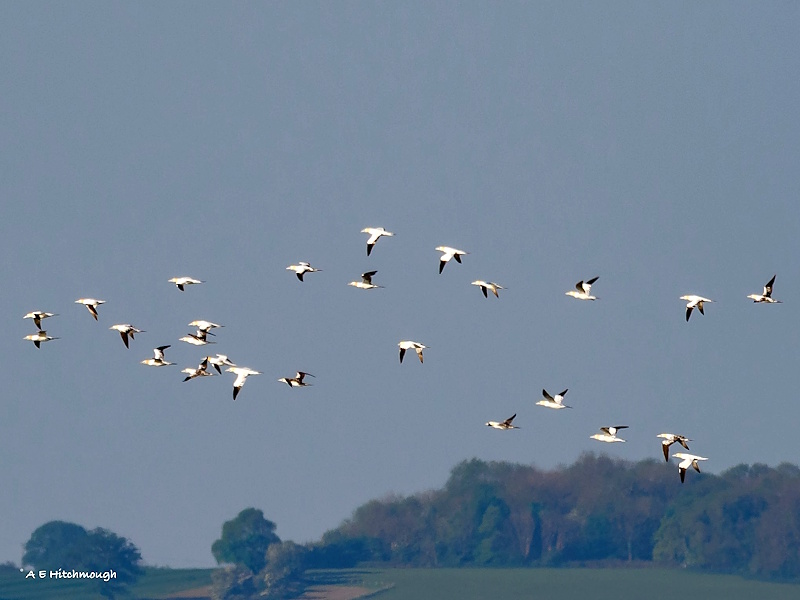
What to expect in June
Even though it's the quietest month of the year
June is an intriguing month, early in the month there will still be
waders passing through on their way north whilst as early as mid-June
we will see the first ones returning. In addition there are always
non-breeding birds present.
Sanderlings, Dunlin and Ringed Plovers are the most likely wader to be seen hurrying through
in
the first week in June but we can also get the occasional Little Stint
and Curlew Sandpiper. The first returning waders are usually Wood
Sandpipers, Spotted Redshanks and Little Ringed Plovers. 2024 was
exceptional for non-breeeding waders with 4,000 or so 2cy Knots feeding
most days on Leasowe shore, along with around 3,000 Oystercatchers,
whilst at Burton Mere Wetlands over 100 Bar-tailed Godwits were easily
the highest ever number there when normally more than two or three is
unusual. Over 100 Black-tailed Godwits were also at BMW as they
are every year, along with breeding Avocets. Also, every year there are
usually a handul of Whimbrels at Heswall right through June, we think
these
must be non-breeding young birds which don't fly all the way to Iceland.
There will be plenty of terns, I've described the Little Terns in the
above article but there will also be the Common Terns at Shotton,
hopefully continuing to recover from the dreadful Bird Flu outbreak. By
the month-end Sandwich Terns will start to arrive back in the estuary,
these first ones are likely to be non- or failed breeders, and it's
always good to see Mediterranean Gulls at this time of year still in
full breeding plumage.
June Highest
Tides:
25th 11.39.58hrs (BST) 9.1m
26th 12.30hrs (BST) 9.2m